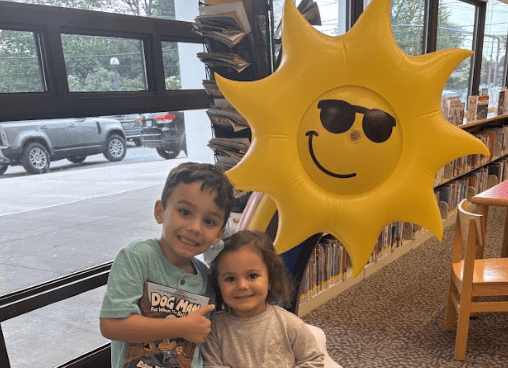Artist Xiomáro (SEE-oh-MAH-ro) was true to his word, in that he never gives the same lecture twice. On Sunday, March 15, speaking at the Oyster Bay Historical Society’s Koenig Center, he was surrounded by his photographic exhibit, The Other Side, photos of a memorial slave gravesite on the William Floyd Estate in Mastic. Theses photos were augmented with photos of the rooms furnished during the 250 years the family of the youngest signer of the Declaration of Independence lived, surrounded by heirloom furniture, rifles, sports gear and memorabilia. He encouraged questions and comments on the show saying, “I worship and respect ideas.”
Phil Blocklyn, OBHS executive director, said that having the William Floyd Estate exhibit was part of the mission of the Oyster Bay Historical Society to promote the history of Long Island.
“People live on Long Island and don’t know what is here,” said Blocklyn.
He explained that most of the current residents on Long Island have come here since the 1940s and brought their own history with them and haven’t taken advantage and pride in what is here already to learn from and own.
Xio opened the floor for questions on the show, and he commented that artists know what is in their paintings, but photographers learn what is in their pictures as they study them. One gentleman mentioned that in the photograph of a poster from the William Floyd House there was a line on volunteering to serve in the Union Army to avoid “the shame of being drafted.” An interesting find in the photo, Xio said, adding that his exhibit has given William Floyd more publicity than before.
Xio also brought along photos straight from his artist-in-residence stint from Feb. 1 to 28, at the Big Cyprus National Preserve in Ochopee, FL. It is more of his work publicizing the national parks. A work in progress, he will now begin to Photoshop and enhance the images using his artistic vision.
The 720,000-acre preserve is a feeder area for the Everglades National Park, as the waters from the swampy area flow down the Florida peninsula. The photos were a taking off point for an ecological story of endangered plants, species, pests and even some damaging native species. He talked of how volunteers from all over the world work to preserve the site. Xio stayed in the preserve’s dormitory and took part in a workshop on handling the Burmese Pythons that have invaded the site as well as a park ranger controlled burn using nature’s way to rejuvenate an area. He also showed slides of the strangling vine that grows around trees, choking the life out of them. The NPS allows the vines to grow, as it is “nature’s way.”
Interestingly, cattails, a native species, is becoming a problem. The waterways used to support a spongy plant that soaks up water in swamps but recently the waterways have become nutrient rich with phosphates and nitrates, which the cattails need to grow. Unfortunately, they clog the waterways, creating a problem for the system that feeds the Everglades. Development in Florida has changed the flow of water into the Everglades; originally it flowed south, unimpeded to the Everglades, but today the water flows east and west to the sea, further endangering the Everglades.
“There are nuances in stepping into the past,” shown in the photos, “layers of things to draw from,” Xio said. “I try to photograph things in a new way. There are no orange sunsets in my work.”
Xio’s photographs are educations in themselves. His work is available on the Internet at www.xiomaro.com. You can download an e-book of his current photographs and you can also purchase them through his website. The profits support his work, and after experiencing several of his lectures, you can see that he gives back to the public more than we can image ourselves.
On Wednesday, March 25, the OBHS held a history-based fundraising supper at the Koenig Research Center turned into an old Colonial tavern. Their next exhibit will be from April 12 to June 7, Ancient Art Form: Contemporary Adaptations in Glass. For more information, call 516-922-5032.


































